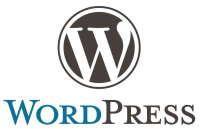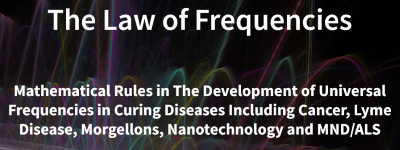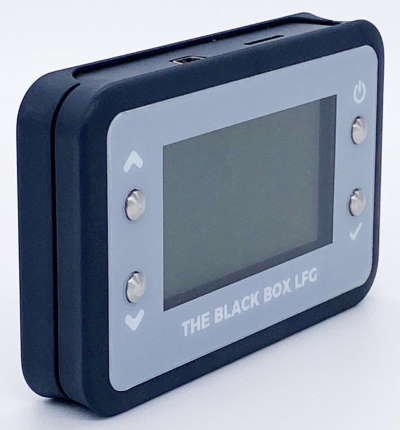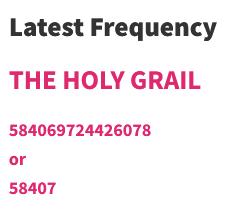Getting Dark Early? How to Stay Happy
Fri 8:48 am +01:00, 31 Dec 2021 2Getting Dark Early? How to Stay Happy
By GreenMedInfo Research Group
Learn five simple strategies to fight the winter blues or seasonal affective disorder (SAD), regaining the motivation you otherwise lose with less sunlight exposure in the colder months
Ah, the blues. Is it the post-holiday letdown? The excess sugar? Less sunlight that comes with the winter season? Seasonal affective disorder (SAD) is the name often given to this phenomenon. It’s a seasonally recurrent kind of major depression, with little known about how it affects people in the summer.[i]
About 10% to 20% of cases of recurrent depression follow a seasonal pattern. While a summer pattern isn’t entirely ruled out, the predominant trend involves fall/winter depression with spring/summer remission.[ii]
SAD is distributed across the general population.[iii] Young adults and women, however, are most likely to experience it, with the reported gender difference following a 2:1 to 9:1 range. It has also been identified in children and teens. Here are some ways to combat SAD, and its less severe cousin “the winter blues,” naturally.
1. Vitamin D
A 2015 study probed the relationship between 25-hydroxyvitamin D (25(OH)D) and depressive and anxiety disorders in a population of Finnish men and women ages 30 to 79.[iv] The study sample involved 5,371 subjects, of which 354 were diagnosed with depression and 222 with anxiety.
Subjects with higher vitamin D3 levels showed a reduced risk of depression. Higher serum concentrations of the nutrients were linked to a lower prevalence of depression particularly among men, younger people, divorcees and those who had an unhealthy lifestyle or metabolic syndrome.
“These results support the hypothesis that higher serum 25(OH)D concentrations protect against depression even after adjustment for a large number of sociodemographic, lifestyle and metabolic factors,” wrote the authors.
2. Light Therapy
Widely investigated for treating SAD is light therapy, or daily exposure to a box containing fluorescent lamps during symptomatic months. Regarding optimal dosing, 10,000 lux of full spectrum or cool white fluorescent lights behind an ultraviolet shield is deemed the standard, with a recommended duration of 30 minutes to two hours per day for two to four weeks.[v]
Bright light therapy has been deemed effective for seasonal depression as well as non-seasonal depression.[vi],[vii] Evidence also shows that it may improve responsiveness to antidepressant treatments.
While light therapy and antidepressants previously showed comparable effectiveness in treating SAD, few studies directly compared them.[viii] A 2006 double-blind randomized trial, conducted in four Canadian centers across three winters, randomly assigned 96 patients to eight weeks of treatment: 10,000 lux light treatment and a placebo capsule, or placebo light and 20 milligrams (mg) of fluoxetine (brand name Prozac) a day.
Findings showed that while there were no significant differences in results between light therapy and antidepressant treatment, the former led to earlier response onset and lower rate of adverse events relative to fluoxetine. Fluoxetine was linked with side effects such as agitation and sleep disturbance as well as palpitations, although both treatments were generally well-tolerated by the subjects.
3. Melatonin
In a 1986 study, researchers tested the hypothesis that melatonin mediated the effects of shortening days on SAD symptoms in the winter.[ix] Based on the results of three different studies, they found that melatoninsecretion may be abnormal in SAD. It may play some role in the symptoms and the effects of light therapy, but was claimed unable to account for the phenomena all by itself.
Melatonin supplementation alone has yielded mixed results in clinical trials in winter depression. In a study, for instance, evening melatonin was no more effective than placebo in sustaining a desired antidepressant effect.[x] Yet some people may respond to 2 to 3 mg of melatonin at bedtime and to support the resetting of their body clock.[xi]
4. Cannabidiol (CBD)
CBD, a constituent of Cannabis sativa, has drawn much interest in recent years for fending off a range of neuropsychiatric disorders as well as depression and anxiety related disorders.[xii],[xiii]
CBD can be incorporated in one’s diet through the winter months, particularly in cooking and creating CBD-infused ingredients to be used in common recipes.[xiv] Other common forms of CBD include CBD oil, capsules, paste, drops, crystals and food supplements.
5. Regular Exercise
Aerobic exercises have been demonstrated to be beneficial in treating non-seasonal major depression. Thus, they have been explored for SAD.
In a study, supervised physical exercise paired with bright light exposure appeared to be effective in enhancing mood and certain aspects of health in wintertime.[xv] In healthy subjects, exercise in bright light led to greater symptom relief than in ordinary room light and led to improvements in both depressive symptoms and vitality rather than just the latter.
References [i] Nussbaumer-Streit B et al “Implementing prevention of seasonal affective disorder from patients’ and physicians’ perspectives – a qualitative study” BMC Psychiatry. 2018; 18(372). [ii] Roecklein K et al “Seasonal Affective Disorder” Psychiatry (Edgmont). 2005 Jan; 2(1): 20-26. Epub 2005 Jan. [iii] Roecklein K et al “Seasonal Affective Disorder” Psychiatry (Edgmont). 2005 Jan; 2(1): 20-26. Epub 2005 Jan. [iv] Jääskeläinen T et al “Higher serum 25-hydroxyvitamin D concentrations are related to a reduced risk of depression” Br J Nutr. 2015 May ;113(9):1418-26. [v] Roecklein K et al “Seasonal Affective Disorder” Psychiatry (Edgmont). 2005 Jan; 2(1): 20-26. Epub 2005 Jan. [vi] Penders T et al “Bright Light Therapy as Augmentation of Pharmacotherapy for Treatment of Depression: A Systematic Review and Meta-Analysis” Prim Care Companion CNS Disord. 2016 Oct 20 ;18(5). Epub 2016 Aug 20. [vii] Eniola K et al “PURLs: Light therapy for nonseasonal major depressive disorder?” J Fam Pract. 2016 Jul ;65(7):486-8. [viii] Lam R et al “The Can-SAD study: a randomized controlled trial of the effectiveness of light therapy and fluoxetine in patients with winter seasonal affective disorder” Am J Psychiatry. 2006 May;163(5):805-12. [ix] Rosenthal N et al “Melatonin in seasonal affective disorder and phototherapy” J Neural Transm Suppl. 1986;21:257-67. [x] Danilenko K et al “Melatonin Treatment of Winter Depression Following Total Sleep Deprivation: Waking EEG and Mood Correlates” Neuropsychopharmacology. 2005;30(1345-52). [xi] DoctorMurray.com https://doctormurray.com/is-a-good-nights-sleep-the-best-prescription-for-depression-and-pain/ [xii] Blessing E et al “Cannabidiol as a Potential Treatment for Anxiety Disorders” Neurotherapeutics. 2015 Oct; 12(4): 825-836. Epub 2015 Sep 4. [xiii] De Mello Schier A et al “Antidepressant-like and anxiolytic-like effects of cannabidiol: a chemical compound of Cannabis sativa” CNS Neurol Disord Drug Targets. 2014;13(6):953-60. [xiv] Hemppedia.org https://hemppedia.org/cbd-for-seasonal-affective-disorder/#footnote_2_92364 [xv] Partonen T et al “Randomized trial of physical exercise alone or combined with bright light on mood and health-related quality of life” Psychol Med. 1998 Nov;28(6):1359-64. volume












Yesterday I was thinking of asking the blog if anyone had seen the sun of late because I lost it about three weeks ago and hadn’t seen it since, although today’s outlook is a bit more promising with the sun trying to break through the clouds.
Occasionally I checked the BBC weather but my experience of their forecasting is such that it’s not often right, and wrong again, at least for my area.
I don’t know about you, but I always find December and January are the longest and most depressing months of the year with diminished daylight and little to do in general. Thereafter, there isn’t enough hours in the day and in the blink on an eye the year has gone before I know it.
To compensate for not getting enough sunlight and feeling SAD I take vitamins D, C and Zink, preferably in foodstuff and to lift my spirit a bit I like humour and music, and with that said here’s a new release by Karl Wolf, premiered on 28 Dec 2021 called Omicron Queen which I think you may like.
https://153news.net/watch_video.php?v=K7D35RMBWSGR
Longer version.
https://www.youtube.com/watch?v=T18NpRqy7CQ
I’m very much the same Gordon, worst two months of the year. It’ll soon be by though, pity the covid shite won’t be the same.